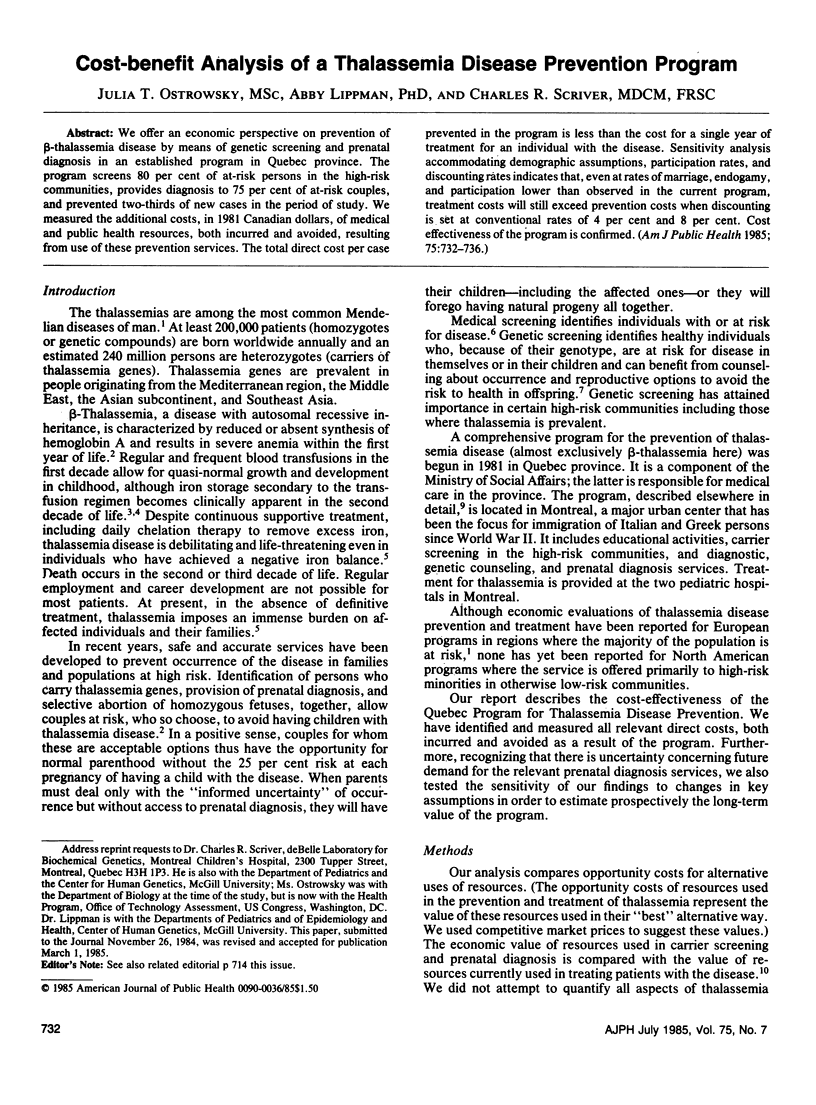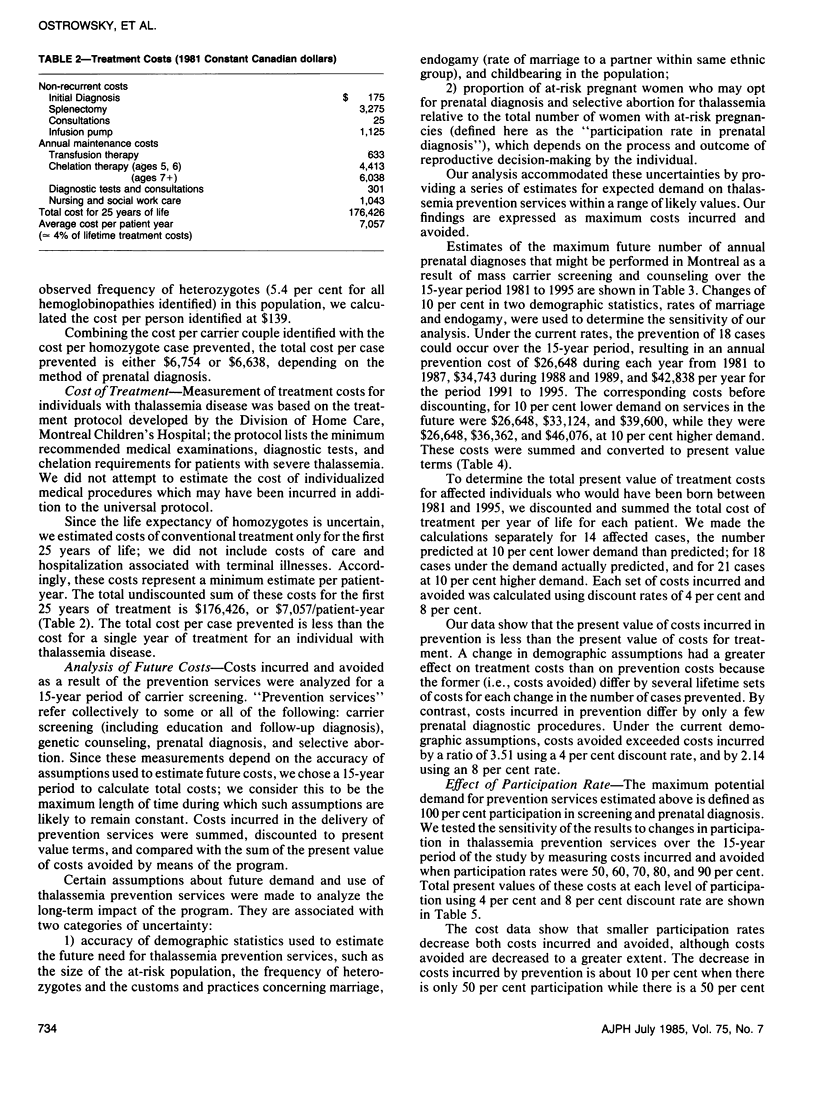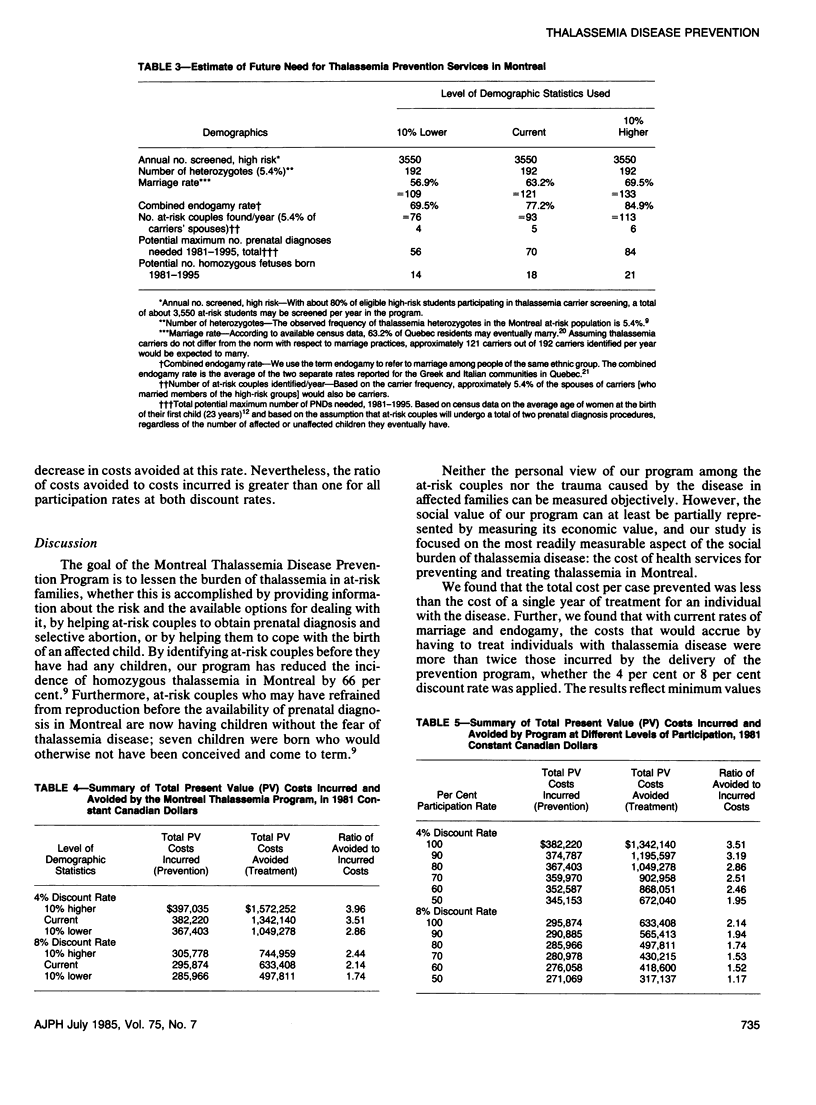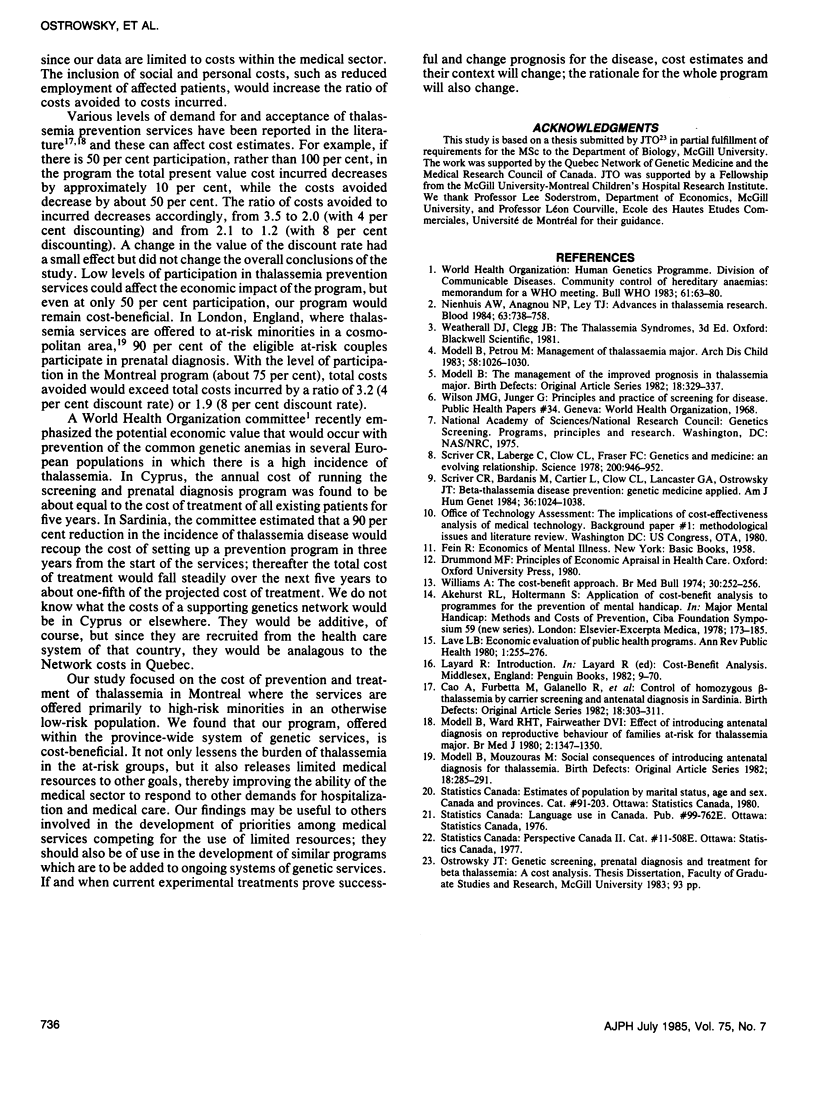Abstract
We offer an economic perspective on prevention of beta-thalassemia disease by means of genetic screening and prenatal diagnosis in an established program in Quebec province. The program screens 80 per cent of at-risk persons in the high-risk communities, provides diagnosis to 75 per cent of at-risk couples, and prevented two-thirds of new cases in the period of study. We measured the additional costs, in 1981 Canadian dollars, of medical and public health resources, both incurred and avoided, resulting from use of these prevention services. The total direct cost per case prevented in the program is less than the cost for a single year of treatment for an individual with the disease. Sensitivity analysis accommodating demographic assumptions, participation rates, and discounting rates indicates that, even at rates of marriage, endogamy, and participation lower than observed in the current program, treatment costs will still exceed prevention costs when discounting is set at conventional rates of 4 per cent and 8 per cent. Cost effectiveness of the program is confirmed.
Full text
PDF




Selected References
These references are in PubMed. This may not be the complete list of references from this article.
- Akehurst R. L., Holtermann S. Application of cost-benefit analysis to programmes for the prevention of mental handicap. Ciba Found Symp. 1978;(59):173–191. doi: 10.1002/9780470720417.ch10. [DOI] [PubMed] [Google Scholar]
- Cao A., Furbetta M., Galanello R., Melis M. A., Angius A., Rosatelli C., Ruggeri R., Addis M., Tuveri T., Falchi A. M. Control of homozygous beta-thalassemia by carrier screening and antenatal diagnosis in Sardinia. Birth Defects Orig Artic Ser. 1982;18(7):303–311. [PubMed] [Google Scholar]
- Lave L. B. Economic evaluation of public health programs. Annu Rev Public Health. 1980;1:255–276. doi: 10.1146/annurev.pu.01.050180.001351. [DOI] [PubMed] [Google Scholar]
- Modell B., Mouzouras M. Social consequences of introducing antenatal diagnosis for thalassemia. Birth Defects Orig Artic Ser. 1982;18(7):285–291. [PubMed] [Google Scholar]
- Modell B., Petrou M. Management of thalassaemia major. Arch Dis Child. 1983 Dec;58(12):1026–1030. doi: 10.1136/adc.58.12.1026. [DOI] [PMC free article] [PubMed] [Google Scholar]
- Modell B. The management of the improved prognosis in thalassemia major. Birth Defects Orig Artic Ser. 1982;18(7):329–337. [PubMed] [Google Scholar]
- Modell B., Ward R. H., Fairweather D. V. Effect of introducing antenatal diagnosis on reproductive behaviour of families at risk for thalassaemia major. Br Med J. 1980 Jun 7;280(6228):1347–1350. doi: 10.1136/bmj.280.6228.1347. [DOI] [PMC free article] [PubMed] [Google Scholar]
- Nienhuis A. W., Anagnou N. P., Ley T. J. Advances in thalassemia research. Blood. 1984 Apr;63(4):738–758. [PubMed] [Google Scholar]
- Scriver C. R., Bardanis M., Cartier L., Clow C. L., Lancaster G. A., Ostrowsky J. T. Beta-thalassemia disease prevention: genetic medicine applied. Am J Hum Genet. 1984 Sep;36(5):1024–1038. [PMC free article] [PubMed] [Google Scholar]
- Scriver C. R., Laberge C., Clow C. L., Fraser F. C. Genetics and Medicine: an evolving relationship. Science. 1978 May 26;200(4344):946–952. doi: 10.1126/science.644337. [DOI] [PubMed] [Google Scholar]
- Williams A. The cost-benefit approach. Br Med Bull. 1974 Sep;30(3):252–256. doi: 10.1093/oxfordjournals.bmb.a071211. [DOI] [PubMed] [Google Scholar]


